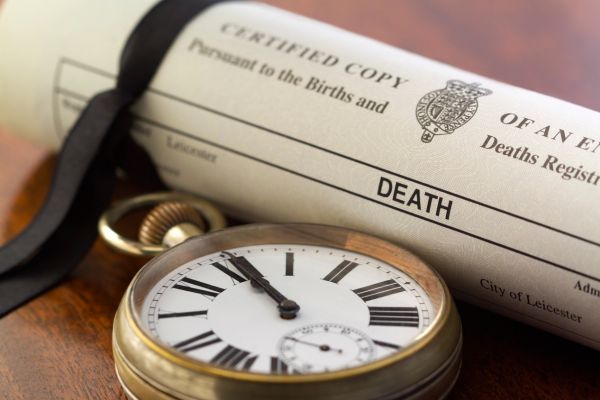Product Liability vs. Strict Liability: Understanding the Key Differences
When it comes to legal matters, especially those surrounding consumer goods, two terms frequently arise: product liability and strict liability. These concepts are central to consumer protection, but they can be a bit tricky to understand, especially if you’re not well-versed in legal jargon. So, let’s dive in and break down these terms, exploring their similarities, differences, and what they mean for both consumers and businesses.
Introduction: Why It Matters
Ever bought a product that didn’t work as advertised? Or worse, did it cause harm? If so, you’ve likely brushed up against the concepts of product liability and strict liability. These legal doctrines are essential tools for holding manufacturers and sellers accountable when their products go awry. They ensure that consumers have recourse when something goes wrong, whether it’s a faulty toaster or a defective car part. But what exactly do these terms mean? And how do they differ? Let’s find out.
What Is Product Liability?
Product liability refers to the legal responsibility of manufacturers, distributors, suppliers, and retailers to ensure that their products are safe for consumer use. If a product is found to be defective and causes harm, the injured party can file a product liability lawsuit. The core idea here is that the entity responsible for putting the product into the consumer’s hands is accountable for its safety.
There are several types of product defects that can lead to liability:
- Design Defects: These are inherent flaws in a product’s design that make it unsafe. Even if manufactured perfectly, the product’s design itself is dangerous.
- Manufacturing Defects: These occur during the production or assembly process. While the design might be sound, something went wrong during manufacturing, leading to a faulty product.
- Marketing Defects: These involve inadequate instructions, warnings, or labels that fail to inform consumers of potential risks. This could include failure to warn about side effects of a medication or not providing adequate instructions for safe use.
What Is Strict Liability?
On the flip side, strict liability is a legal doctrine that holds a party responsible for damages or injuries caused by their actions, regardless of fault or intent. When it comes to products, strict liability means that if a product is defective and causes harm, the manufacturer or seller is liable, even if they were not negligent in producing or selling the product.
Strict liability focuses on the product itself rather than the conduct of the manufacturer or seller. This means that the injured party does not need to prove that the manufacturer was careless or intended to cause harm. Instead, they only need to show that the product was defective and that the defect caused the injury.
Product Liability vs. Strict Liability: The Key Differences
Now that we’ve covered the basics, let’s dive into the main differences between product liability and strict liability.
1. Focus of Liability
- Product Liability: Focuses on the negligence or misconduct of the manufacturer, distributor, or seller. The injured party must prove that the entity failed to act with reasonable care in designing, manufacturing, or marketing the product.
- Strict Liability: Focuses on the product itself. The injured party does not need to prove negligence or misconduct, only that the product was defective and caused harm.
2. Burden of Proof
- Product Liability: The burden of proof lies with the injured party to show that the manufacturer or seller was negligent or that the product had a defect that directly caused the injury.
- Strict Liability: The injured party only needs to prove that the product was defective and that the defect led to their injury. Negligence or intent does not need to be proven.
3. Application in Court
- Product Liability: Often requires a more complex legal process, where the injured party must present evidence of the defect, negligence, or misconduct. This could involve expert testimony, detailed evidence, and a thorough investigation.
- Strict Liability: Simplifies the legal process, as the injured party does not need to prove negligence. This often makes it easier for consumers to win cases, as the focus is solely on the defective product.
4. Impact on Manufacturers and Sellers
- Product Liability: Manufacturers and sellers may be held liable if found negligent, but they have the opportunity to defend themselves by proving that they acted with reasonable care or that the defect did not cause the injury.
- Strict Liability: Manufacturers and sellers are more vulnerable to lawsuits because liability is based on the defective product itself, not on their actions. This can lead to higher insurance costs and more stringent quality control measures.
Examples of Product Liability vs. Strict Liability Cases
Let’s take a look at a few real-world examples to illustrate these concepts.
Product Liability Example
Imagine you buy a car, and a few months later, the brakes fail due to a design flaw. You crash and suffer injuries. In this case, you could file a product liability lawsuit against the car manufacturer, arguing that they were negligent in designing the brakes.
To win the case, you would need to prove that:
- The brakes had a design defect.
- The manufacturer was aware of the defect or should have been aware.
- The defect caused your injury.
If successful, you could be awarded damages for medical expenses, lost wages, and pain and suffering.
Strict Liability Example
Now, imagine you purchase a bottle of pain medication, but it contains a harmful substance due to a manufacturing error. You take the medication, fall ill, and end up in the hospital. Under strict liability, you could sue the manufacturer without needing to prove that they were negligent. You only need to show that the medication was defective and that the defect caused your illness.
Why These Distinctions Matter
Understanding the difference between product liability and strict liability is crucial for both consumers and businesses. For consumers, it clarifies their rights and the avenues available for seeking compensation if they’re harmed by a defective product. For businesses, it underscores the importance of rigorous quality control and clear communication with consumers.
Strict liability, in particular, has a profound impact on businesses because it lowers the bar for consumers to win lawsuits. As a result, companies must be vigilant in ensuring that their products are safe and free from defects.
FAQs
Q: Can a product liability case also involve strict liability?
A: Yes, it’s possible for a product liability case to involve strict liability. For example, if a product is inherently dangerous (like a firearm or a hazardous chemical), the manufacturer could be held strictly liable for any harm caused, even if they were not negligent.
Q: What defenses are available to manufacturers in product liability cases?
A: Manufacturers can defend themselves by proving that the product was not defective, that the consumer misused the product, or that the defect did not cause the injury. They may also argue that the consumer was aware of the risk and used the product anyway (known as assumption of risk).
Q: How do product recalls relate to product liability and strict liability?
A: Product recalls are often initiated when a defect is discovered in a product. By recalling the product, manufacturers aim to prevent harm and reduce the risk of liability. However, a recall does not necessarily absolve a company from liability if the product has already caused harm.
Conclusion: Navigating the Legal Landscape
In the complex world of consumer products, understanding the distinctions between product liability and strict liability can be a game-changer. Whether you’re a consumer seeking justice or a business aiming to mitigate risk, these concepts form the bedrock of product safety and accountability. By grasping these key differences, you’re better equipped to navigate the legal landscape and make informed decisions.
For more information on this topic, consider visiting the following resources:



